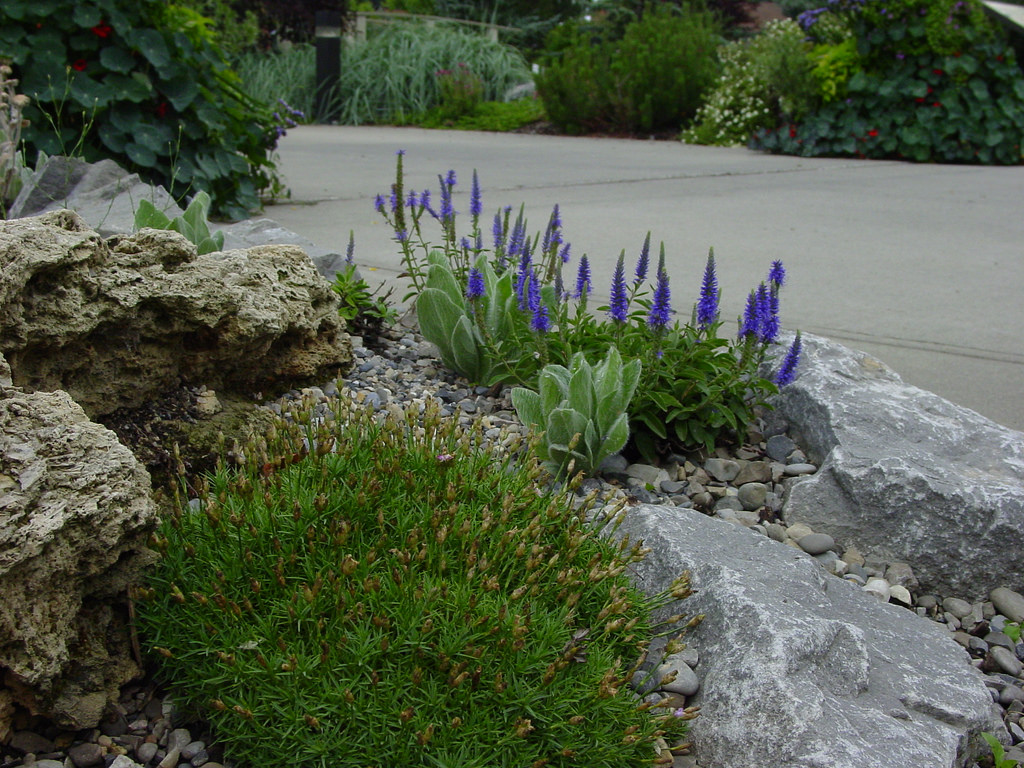How to Make Alpine Gardens
Alpine Gardens, Landscape Materials, Gravel, Topsoil

Rivar Sand and Gravel’s experts enjoy tinkering in their gardens. At this time of year the borders start to fade so why not add some attractive alpine options to your outdoor spaces? Autumn and spring are perfect times to create an alpine garden.
The ranges of plants and aesthetics are fabulous. Alpine Gardens can be as small or as large as you wish. Many alpine plants are compact so you don’t need a vast space, a raised bed or pot will deliver the same sophisticated appearance.
Alpine plants are essentially plants that grow “above the tree line.” They are content to be in mountainous and rocky areas and subjected to cool temperatures so they won’t mind our winters, although they prefer dry to wet weather and not to be in a frost pocket.
Snow acts as an insulator so you don’t need to worry about alpines shrivelling up and dying, remember they’re natives of cold countries.
Plants you may wish to consider:
- Aliums
- Polygala
- Potentilla
- Ferns
- Conifers
- Saxifraga
- Campanula
- Ranunculus
- Sempervivum
- Primula
This list is by no means exhaustive. A little research and expert help will show you that there is a broad range of alpines so you can let your imagination run wild.
Most alpines are perennials, this means they will return year after year and so these plants are an excellent investment.
One of the most vital factors in an alpine garden, large or small, is the drainage. Whilst the plants are in soil like normal garden plants they should
have a layer of grit above the soil and around the neck of the plants to allow for maximum drainage.
There should also be layer of gravel or rock at the foot of a bed, again this ensures drainage and that plants don’t sit in puddles of water.
Therefore:
- Top layer –gravel.
- Next level – top soil, compost.
- Bottom layer – rocks and gravel.
All of these items are easily sourced and they represent value for money for DIY and commercial projects.
The proportions of the gravel chosen can affect the visibility of the plants. Be careful not to opt for an eye catching 20mm chipping that will dwarf your smaller alpine plants and steal the attention. The gravel should be the backdrop not the focus.
That said, try not to place the smallest grit or gravel with conifers and ferns that may grow taller than the other alpines, they’ll look out of proportion.
Playing with gravel types, sizes, finishes and even where the gravel was sourced from can be very instructive and fun.
UK gravel is often in sizes of 20-5mm and 10mm. The smaller size is frequently labelled as pea gravel.
We find that locally quarried Cotswold Chippings, Old English Chippings, Moonstone Gravel and South Cerney Gravel offer rich tones which compliment alpine planting.
We will be delighted to help you to choose the right gravel and suggest planting for your Alpine Gardens design.